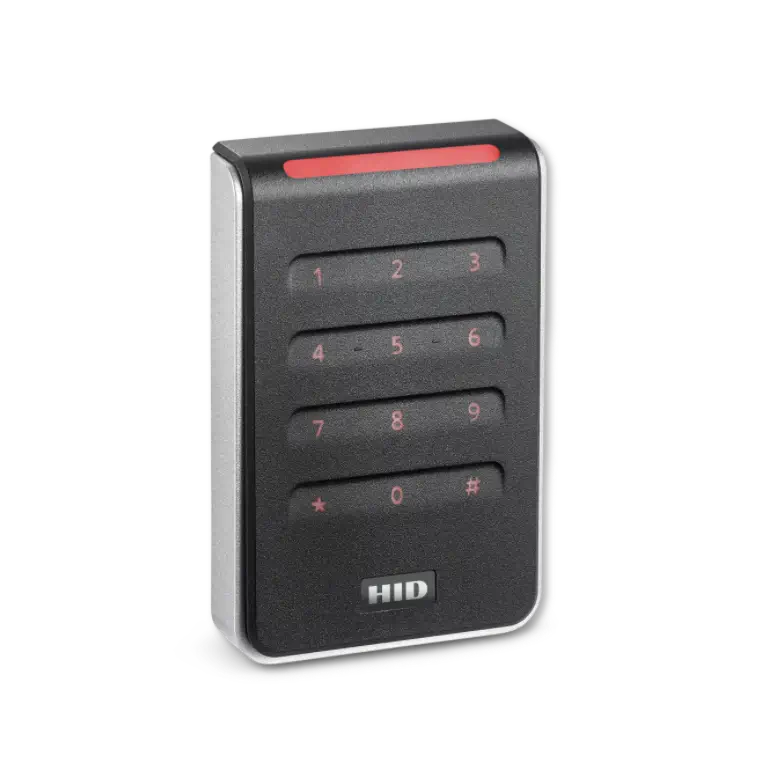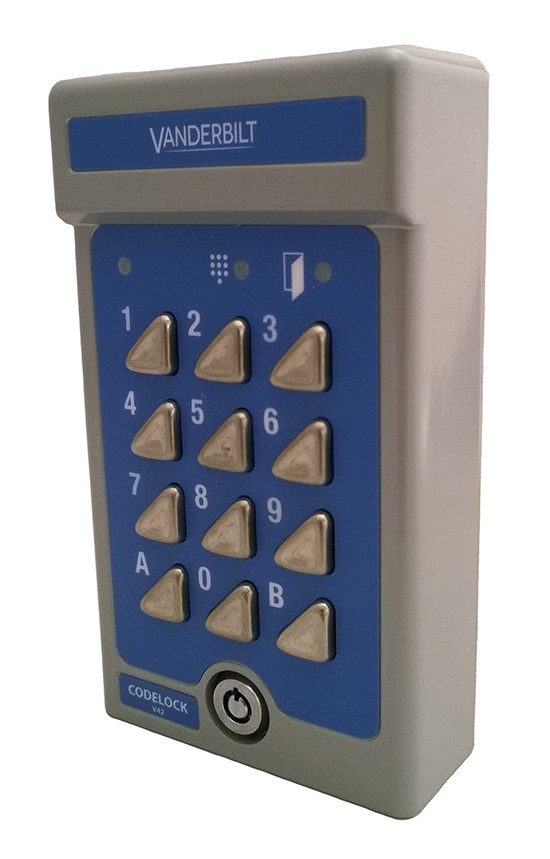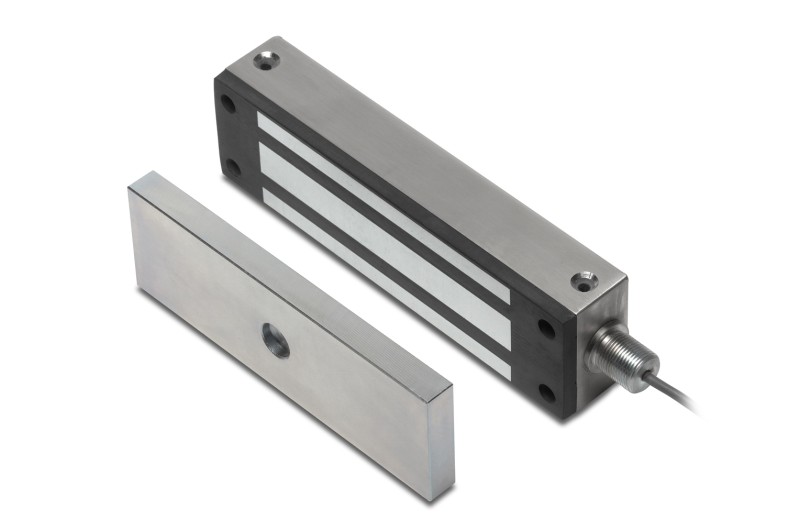12 June 2023
Mastering Access Control: The Ultimate Guide to Access Control Systems
Learn everything you need to know about access control systems in our Ultimate Guide to Access Control Systems. From the basics of residential and commercial access control systems, to the latest trends; this guide has it all.
An access control system is a security system that controls who has access to a physical location. Access control systems typically utilise a combination of hardware and software to identify authorised users and grant or deny access to specific areas.
There are many different types of access control systems available, each with their own set of features and benefits. Some of the most common types of access control systems include:
GSM Access Control Systems
GSM access control systems are a type of access control system that uses cellular networks to communicate between the access control panel and the door locks. This makes them ideal for remote locations that do not have access to a wired network.
GSM access control systems are gaining popularity as effective security solutions in the United Kingdom, as these systems provide robust access control capabilities for remote locations that lack access to a wired network. By utilising cellular networks, GSM access control systems offer seamless communication between the access control panel and the door locks.
We will explore the components that typically make up a GSM access control system and how they work together to enhance security.
Access Control PanelAt the heart of a GSM access control system is the access control panel. This central hub plays a crucial role in managing the entire system. It is responsible for controlling the door locks and regulating access privileges. The access control panel acts as the brain of the system, processing and validating user credentials to determine whether access should be granted or denied. Administrators can configure and customise access rights through the control panel, ensuring that only authorised individuals can enter specific areas. Readers are essential components of a GSM access control system. These devices are used to read the credentials of users seeking access. Credentials can take various forms, including RFID cards, PIN codes, or biometric data. The readers communicate with the access control panel, relaying the user’s credentials for verification. Depending on the level of security required, additional authentication factors such as fingerprints or retinal scans may be integrated into the readers. |
 |
|
|
Door LocksAnother integral part of the system, physically control access to doors. GSM access control systems support both electrified and mechanical door locks. Electrified locks are often preferred as they allow remote control and monitoring capabilities. These locks can be unlocked or locked via commands sent by the access control panel, providing convenient access management. We stock a wide range of locking hardware and would be happy to offer advice on the best option for your system. |
To establish communication with the cellular network, a GSM modem and SIM card is utilised. Often built into the system for increased convenience, this enables the access control system to connect and transmit data over the cellular network.
GSM access control systems offer a reliable and efficient solution for access control systems in the UK. By utilising components such as the access control panel, readers, door locks, and a GSM modem, these systems provide secure and convenient access management. Whether it’s for a remote facility, a construction site, or any other site without a wired network, GSM access control systems offer an effective means of controlling access and enhancing overall security.
Networked Access Control Systems
Networked systems are connected to a local area network (LAN) or wide area network (WAN). This allows them to be centrally managed and monitored, along with making it possible to integrate them with other security systems, such as video surveillance and intrusion detection and can be used to control access to a variety of areas (such as Entrances and exits, Offices, Warehouses, Storage areas, Sensitive areas).
Networked access control systems work by monitoring network traffic and identifying devices (such as access control cards and fobs) that are attempting to access a building or room. Networked access control systems can then use this information to grant or deny access to the building or room. They can also be used to enforce security policies, such as requiring users to authenticate before accessing a building or room.
Key Components In Networked Access Control Systems
Access Control PanelThe access control panel serves as the central control unit for the system. It manages and processes access requests, verifies user credentials, and controls the unlocking and locking of doors or entry points. Readers: Readers are devices placed at entry points that capture and authenticate user credentials. These credentials can take various forms, such as proximity cards, key fobs, biometric data (fingerprint, retina scan), or personal identification numbers (PINs). |
 HID 40KNKS Signo 40 Multitech Reader With Keypad |
 |
Door LocksDoor locks can be electrically or mechanically controlled mechanisms that secure entry points. They are managed by the access control panel, which sends signals to unlock or lock the doors based on user authentication. Shop our range of Maglocks and Shearlocks, which offer an ideal solution for access control systems. |
Network Infrastructure: Networked access control systems rely on existing network infrastructure, such as Ethernet cables or wireless connections, to establish communication between the access control panel, readers, and other system components.
Networked control systems can help to protect an organisation from unauthorised access, while providing scalability, flexibility, and increased security.
When choosing any type of access control system solution, it is important to consider the specific needs of an organisation.
Some factors to consider include:
- The size and complexity of the organisation
- The types of areas that need to be protected
- The security requirements of the organisation
- The budget of the organisation
Networked access control systems are widely used in various industries and settings, including commercial buildings, educational institutions, healthcare facilities, government offices, and residential complexes. They offer enhanced security, improved access management, and increased operational efficiency for organisations seeking robust control over their physical spaces and resources.
Networked Access Control Systems
Standalone Access Control Systems
Standalone systems are not connected to any network. This makes them more secure from hacking, but it also limits their functionality.
Standalone access control systems are security systems that operate independently without the need for a network connection. Unlike networked access control systems, standalone systems do not rely on a central control unit or network infrastructure to manage access. Instead, they are self-contained and primarily function at the individual door or entry point level.
In Standalone Access Control Systems, The Key Components Typically Include:
 |
Access Control Keypad or ReaderStandalone systems often feature a keypad or reader installed directly at the entry point. Users input a unique PIN code or present a proximity card or key fob to authenticate their identity. |
Door LocksStandalone systems utilise door locks that are directly connected to the access control keypad or reader. Upon successful authentication, the system triggers the door lock to either unlock or deny access. |
 |
Standalone Access Control Systems
We hope that our Ultimate Guide to Access Control Systems has helped, however, for any help in selecting the right door access control system, we would be more than happy to discuss your exact requirements and help you to find the best access control system for your needs.
Benefits of Access Control Systems
No “ultimate guide to access control systems” would be complete without detailing the benefits that can be achieved by installing a quality access control system for your home or business. The main benefits include:
Increased security
Access control systems can help to prevent unauthorised access to your property, which can help to protect your people, property, and assets from theft, damage, or other harm.
Improved efficiency
Access control systems can help to improve the efficiency of your operations by streamlining access to areas and resources.
Increased peace of mind
Access control systems can give you peace of mind knowing that your property and assets are protected
Frequently Asked Questions
How does an access control system work?
Access control systems typically work by using a combination of hardware and software. The hardware consists of door locks, readers, and controllers. The software is used to manage the system and track access.
When a user attempts to access a restricted area, they present their credentials to a reader. The reader then communicates with the controller, which verifies the user’s credentials and grants or denies access.
What are the benefits of using an access control system?
Access control systems offer increased security by preventing unauthorized access to your property, improved operational efficiency by streamlining access, and peace of mind knowing that your property and assets are protected.
What types of access control systems are available?
There are various types of access control systems, including GSM systems that use cellular networks, networked systems connected to a LAN/WAN, standalone systems not connected to any network, and cloud-based systems hosted in the cloud and accessed via the internet.
Can access control systems be integrated with other security systems?
Yes, many access control systems can be integrated with other security systems such as video surveillance, intrusion detection, and alarm systems. This integration enhances the overall security and provides a comprehensive solution.
What should I consider when choosing an access control system?
Factors to consider include the level of security required, scalability for future growth, ease of use and management, integration capabilities, compatibility with existing infrastructure, and compliance with industry standards and regulations.
